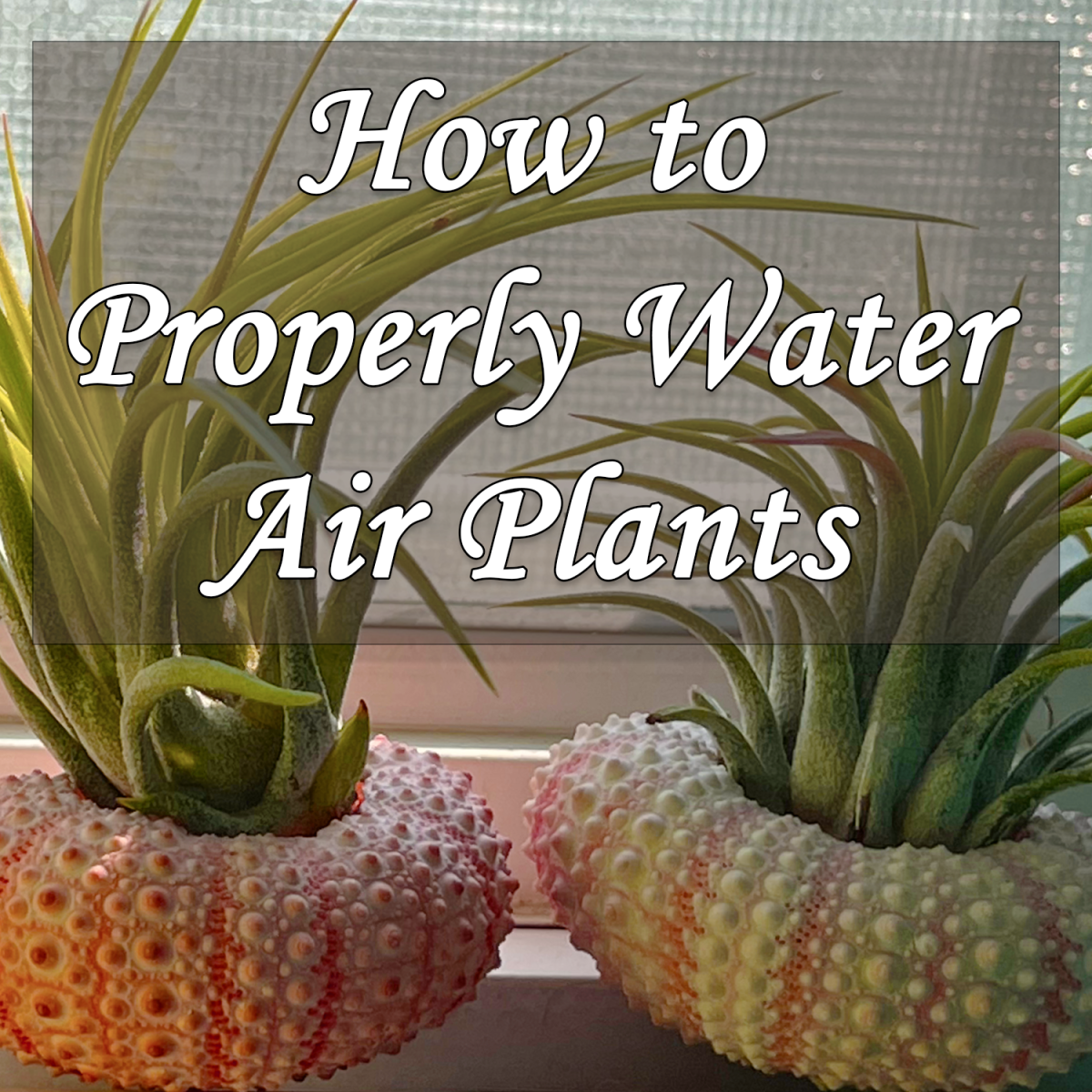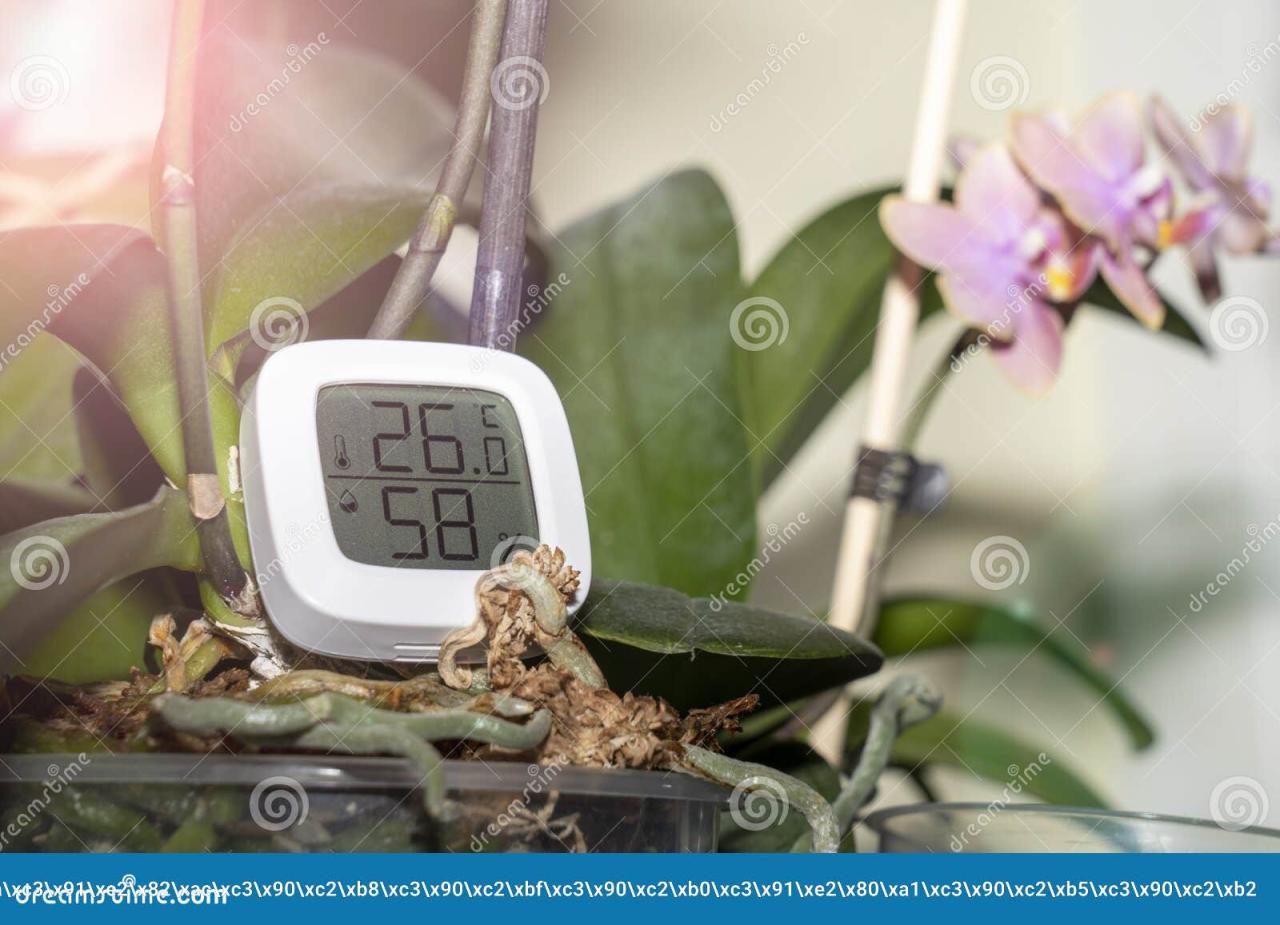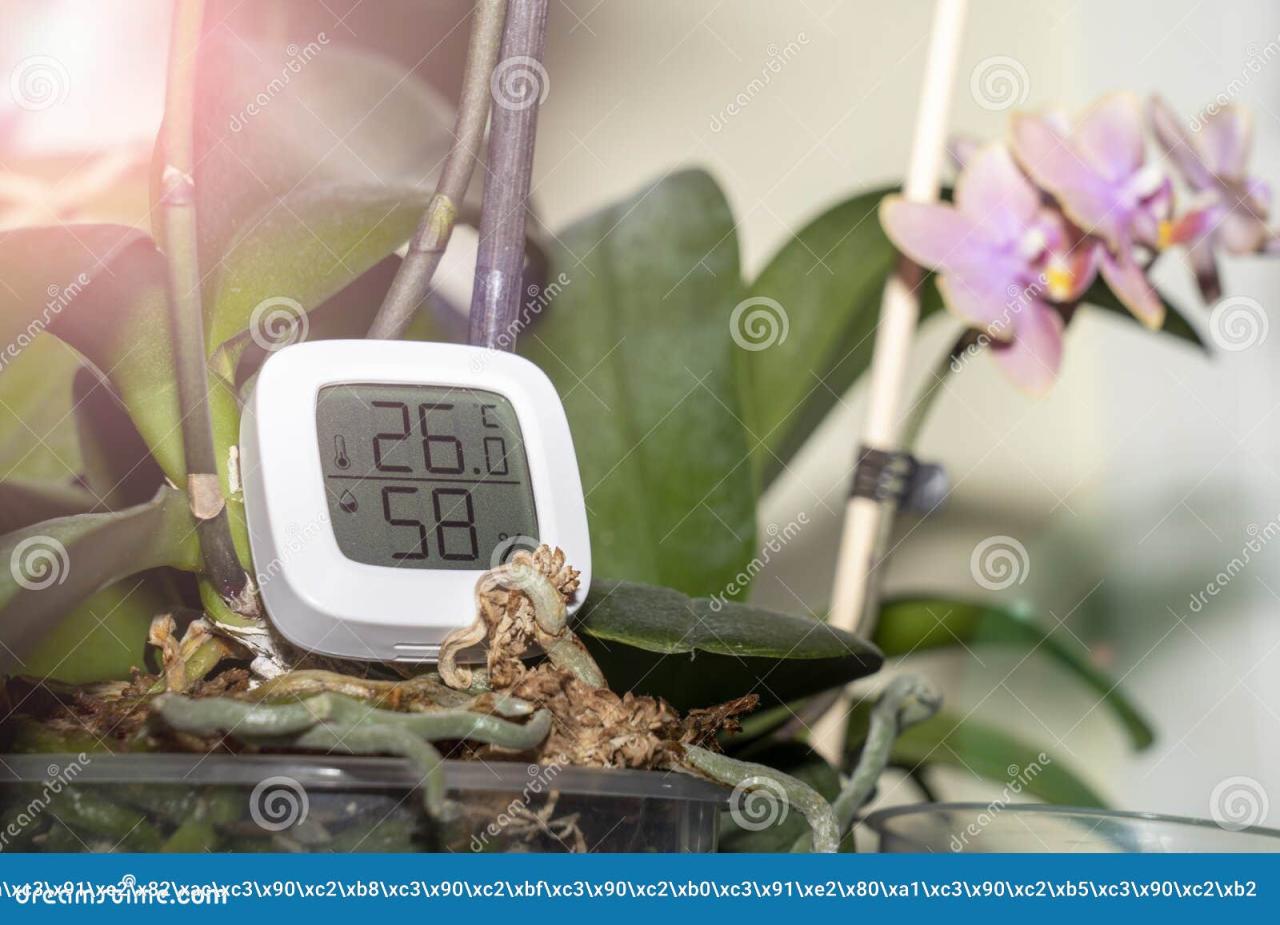The Perfect Water Temperature for Air Plants: A Guide to Optimal Growth. Air plants, with their unique ability to absorb moisture from the air, are a fascinating addition to any home or garden. While their water requirements may seem simple, the temperature of the water used for their care plays a crucial role in their health and growth.
Understanding the ideal water temperature for your air plants is key to ensuring they thrive and remain vibrant.
This guide delves into the factors that influence the perfect water temperature for air plants, exploring the role of species, environmental conditions, and watering techniques. We’ll discuss the potential risks of using water that is too cold or too hot, highlighting the ideal temperature range for optimal growth.
With practical tips and troubleshooting advice, you’ll be equipped to provide your air plants with the perfect water temperature for a flourishing future.
The Perfect Water Temperature for Air Plants

Air plants, also known as epiphytes, are fascinating and unique plants that thrive without soil, absorbing nutrients and moisture from the air. While they can tolerate a range of conditions, the temperature of the water they receive is a crucial factor in their health and well-being.
The “perfect” water temperature for air plants isn’t a single, absolute value, but rather a range that promotes optimal growth and prevents stress.
Water Temperature and Air Plant Health
The temperature of water used to mist or soak air plants directly impacts their ability to absorb nutrients and moisture. Air plants are particularly sensitive to temperature extremes, and both excessively cold and hot water can negatively affect their health.
- Cold Water:When exposed to cold water, air plants can experience slowed growth and even root damage. Cold water can also shock the plant, making it more susceptible to diseases and pests.
- Hot Water:Similarly, hot water can burn the delicate tissues of air plants, causing leaf discoloration, wilting, and even death.
Factors Influencing Ideal Water Temperature

The ideal water temperature for air plants is not a single, fixed value. It is influenced by several factors, including the specific species of air plant, the surrounding environment, and the method of watering. Understanding these factors is crucial for providing optimal care and ensuring the health and vitality of your air plants.
Air Plant Species
The ideal water temperature for air plants varies depending on their species and origin. Some species are adapted to cooler climates and prefer water temperatures that are closer to room temperature, while others thrive in warmer environments and can tolerate slightly higher water temperatures.
- Tillandsia ionantha (Pink Quill):This popular species originates from Mexico and prefers water temperatures between 65°F and 75°F (18°C and 24°C).
- Tillandsia xerographica (Xerographica):This large, striking species hails from Mexico and prefers water temperatures between 70°F and 80°F (21°C and 27°C).
- Tillandsia cyanea (Pink Quill):Native to Ecuador, this species prefers water temperatures between 75°F and 85°F (24°C and 29°C).
Environmental Factors
The ambient temperature and humidity levels of the surrounding environment also play a significant role in determining the ideal water temperature for air plants.
Humidity
In high humidity environments, air plants can tolerate slightly cooler water temperatures. This is because the humidity helps to prevent the plant from drying out too quickly. In drier environments, air plants may need warmer water temperatures to prevent them from becoming too cold.
Ambient Temperature
Air plants are sensitive to extreme temperatures, and it is essential to consider the ambient temperature when determining the ideal water temperature. During hot summer months, air plants may benefit from slightly cooler water to prevent overheating. Conversely, during cold winter months, it is important to avoid using cold water, as this can shock the plant and lead to damage.
Important Note:Air plants should never be submerged in water for extended periods. Their roots are not designed for absorbing water directly from the soil, and prolonged submersion can lead to rot.
Water Temperature Effects on Air Plant Health

The temperature of the water you use to soak your air plants can significantly impact their health and growth. While air plants are generally adaptable, they are sensitive to extreme water temperatures. Both excessively cold and hot water can negatively affect their well-being.
Effects of Excessively Cold Water
Cold water can shock air plants, hindering their ability to absorb nutrients and moisture effectively. When exposed to prolonged periods of cold water, the following negative effects may occur:
- Growth Inhibition:Cold water can slow down the plant’s metabolic processes, leading to stunted growth.
- Root Damage:The delicate roots of air plants are susceptible to damage from cold water. This damage can impair their ability to absorb nutrients and moisture.
- Leaf Discoloration:Cold water can cause the leaves to turn yellow or brown, indicating stress and potential damage.
Effects of Excessively Hot Water
Just as cold water can harm air plants, so can excessively hot water. Hot water can cause burns and wilting, negatively impacting their overall health.
- Leaf Burns:Hot water can scald the leaves, leading to brown spots or patches. These burns can damage the plant’s ability to photosynthesize.
- Wilting:Hot water can dehydrate the plant quickly, causing it to wilt and droop. This can be particularly problematic for air plants, which rely on their leaves for water absorption.
- Root Damage:Similar to cold water, hot water can also damage the delicate roots, hindering their ability to absorb nutrients and moisture.
Ideal Water Temperature Range for Air Plants
The ideal water temperature for soaking air plants is between 65°F and 75°F (18°C and 24°C). This temperature range allows the plants to absorb water efficiently without causing stress or damage. Water at this temperature is comfortable for the plant and promotes optimal growth.
“Using water within this temperature range ensures the air plant can effectively absorb nutrients and moisture, promoting healthy growth and minimizing the risk of damage.”
Watering Techniques and Water Temperature Considerations
Watering air plants is a crucial aspect of their care, and water temperature plays a significant role in their health and well-being. Understanding the different watering techniques and how to adjust water temperature accordingly is essential for maintaining thriving air plants.
Watering Methods and Water Temperature Adjustments
The choice of watering method influences the ideal water temperature for air plants. Different methods have varying effects on the plant’s absorption and potential for temperature shock.
- Soaking:Soaking is a popular method that involves immersing the air plant in a bowl of water for a specific duration. The ideal water temperature for soaking is between 65-75°F (18-24°C). This temperature range allows for optimal absorption while minimizing the risk of cold shock.
To ensure the water temperature is suitable, use a thermometer to check the water before soaking the air plant.
- Misting:Misting involves spraying the air plant with a fine mist of water. While misting can be a convenient method, it is less effective than soaking in providing adequate hydration. The water temperature for misting should be slightly warmer than room temperature, around 70-75°F (21-24°C).
The perfect water temperature for air plants is generally room temperature, which is around 65-75 degrees Fahrenheit. However, the frequency with which you should water your air plants depends on a number of factors, such as the humidity and temperature of your environment.
To determine the best watering schedule for your air plants, you should consult a resource like How Often Should You Water Air Plants? , which provides a comprehensive guide to air plant care. Once you have established a proper watering routine, you can ensure that your air plants receive the right amount of moisture without subjecting them to temperature extremes that could damage their delicate roots.
This helps prevent chilling the plant and promotes better absorption.
- Immersion:Immersion is a less common method but can be effective for certain air plant species. It involves fully submerging the plant in water for a short period. The ideal water temperature for immersion is similar to soaking, around 65-75°F (18-24°C).
However, it is crucial to monitor the plant’s condition during immersion and avoid prolonged exposure.
Tips for Maintaining Ideal Water Temperature
Maintaining the appropriate water temperature is crucial for air plant health. Here are some practical tips to ensure optimal watering conditions:
- Use a thermometer:Regularly check the water temperature with a thermometer to ensure it falls within the recommended range for the chosen watering method. This eliminates guesswork and helps maintain consistency.
- Warm water before use:For soaking and immersion, allow the water to reach room temperature before using it. This prevents shocking the air plant with cold water.
- Avoid using tap water directly:Tap water often contains chemicals and minerals that can harm air plants. Use filtered or distilled water for watering. If using tap water, allow it to sit for 24 hours to let chlorine evaporate.
- Adjust water temperature based on climate:In colder climates, it is essential to warm the water slightly above room temperature to prevent chilling the air plant. Conversely, in warmer climates, room temperature water is usually sufficient.
Troubleshooting Water Temperature Issues
While air plants are remarkably resilient, they can suffer from the effects of improper water temperature. Understanding the signs of distress and how to diagnose the cause will help you address the problem and restore your air plant’s health.
Identifying Signs of Water Temperature Issues
Air plants, when exposed to consistently incorrect water temperatures, exhibit distinct symptoms. Observing these changes can be a key indicator that the water temperature is the root cause of your plant’s distress.
While air plants don’t require soil, they do need regular watering, and the ideal temperature for their water is room temperature. This is because cold water can shock the plant, while hot water can burn its delicate roots. If you’re struggling with pesky gnats, you can try using hydrogen peroxide to kill them.
How to Use Hydrogen Peroxide to Kill Gnats in Plants explains how to use this method safely and effectively. Once the gnats are gone, you can continue to water your air plants with room-temperature water, ensuring they stay healthy and thriving.
- Leaf Discoloration:A change in leaf color, from the typical vibrant green to yellowing, browning, or even blackening, can signal a water temperature issue. This discoloration often indicates stress, possibly due to overly cold or hot water.
- Leaf Curling or Wilting:Leaves that curl inwards or droop, losing their usual upright posture, could indicate water temperature problems. This curling or wilting is a sign of dehydration, often caused by the inability of the plant to absorb water efficiently due to temperature extremes.
- Leaf Dropping:Air plants might shed leaves as a response to stress. This shedding can be triggered by various factors, including incorrect water temperature.
- Slow Growth:Air plants, like all plants, need optimal conditions for healthy growth. Water temperature significantly impacts their ability to absorb nutrients and photosynthesize, leading to stunted growth.
- Root Rot:While air plants don’t have traditional roots, their trichomes can be affected by water temperature extremes. Cold water can shock the trichomes, leading to rot and hindering their ability to absorb water.
Diagnosing Water Temperature Issues
Once you observe these signs, you need to determine if the water temperature is the culprit. Consider the following:
- Water Source:Tap water can fluctuate in temperature, especially during different seasons. Cold water from the tap can be too cold for air plants, particularly during winter.
- Watering Practices:The temperature of the water used for soaking can drastically impact the air plant’s health. Soaking in excessively hot or cold water can cause stress.
- Environmental Conditions:The ambient temperature of the room where the air plant is kept can also influence the water temperature during soaking. A cold room can cool the water, while a hot room can warm it.
Adjusting Water Temperature for Air Plant Health
Once you’ve diagnosed the water temperature issue, adjusting it is crucial for restoring your air plant’s health.
- Use Room Temperature Water:Ideally, water should be at room temperature, between 65-75°F (18-24°C), for soaking air plants. This temperature range allows the plants to absorb water efficiently without experiencing shock.
- Warm Water for Cold Environments:If your home is consistently cold, especially during winter, you can slightly warm the water before soaking your air plants. You can use a kettle or let the water sit out for a while to reach a comfortable temperature.
- Cool Water for Hot Environments:In hot climates or during summer, it’s best to use cool water for soaking. You can even add ice cubes to the soaking water to further cool it down.
- Gradually Adjust Water Temperature:If you’ve been using excessively hot or cold water, don’t drastically change the temperature immediately. Gradually adjust the water temperature over several soakings to allow the plant to adapt.
- Monitor Your Air Plant:After adjusting the water temperature, keep a close eye on your air plant for signs of improvement. If the symptoms persist, it’s advisable to consult a horticultural expert for further guidance.
Maintaining Optimal Water Temperature
Providing air plants with water at the right temperature is crucial for their health and growth. While air plants can tolerate a range of temperatures, maintaining optimal water temperature year-round is essential for their well-being.
Water Temperature Monitoring and Adjustment
Monitoring water temperature is essential for ensuring optimal conditions for air plants.
- A simple and inexpensive method is to use a digital thermometer, readily available at most hardware stores or online retailers.
- Immerse the thermometer in the water you intend to use for watering and take a reading. Compare the temperature to the ideal range for your air plant species.
- For precise temperature control, consider using a water heater. These devices are available in various sizes and can be set to maintain a specific temperature.
Adjusting Water Temperature Based on Seasons
Seasonal variations in ambient temperature necessitate adjustments to the water temperature used for air plants.
- During warmer months, tap water is often too warm, especially in regions with hot summers. It’s best to allow tap water to cool to room temperature before using it to water air plants.
- In colder months, tap water can be too cold, especially if it’s directly from the tap. It’s recommended to let tap water warm up to room temperature or slightly above before using it to water air plants.
Practical Tips for Maintaining Optimal Water Temperature
Here are some practical tips for maintaining optimal water temperature for air plants throughout the year:
- Use a water heater:This is particularly helpful during colder months when tap water may be too cold. Water heaters are readily available online and at most hardware stores.
- Allow tap water to cool or warm up:During warmer months, let tap water sit for a few hours to cool to room temperature. During colder months, allow tap water to warm up to room temperature or slightly above before using it to water air plants.
- Use rainwater:Rainwater is naturally at ambient temperature and is an excellent option for watering air plants. Collect rainwater in a clean container and allow it to sit for a few days to allow any impurities to settle.
- Monitor the water temperature:Regularly check the water temperature using a digital thermometer, especially during seasonal transitions.
Resources for Monitoring and Adjusting Water Temperature, The Perfect Water Temperature for Air Plants
- Digital thermometers:These are widely available at hardware stores and online retailers. Look for thermometers with a wide temperature range and accuracy.
- Water heaters:These devices can be purchased online or at hardware stores. Choose a water heater that is appropriate for the size of your air plant collection.
- Air plant care guides:Consult air plant care guides for specific information on ideal water temperatures for your air plant species.
Summary
By understanding the nuances of water temperature and its impact on air plant health, you can ensure your beloved plants receive the optimal care they need to thrive. From selecting the right water temperature to adjusting watering techniques based on the season, this guide provides a comprehensive approach to maintaining the perfect environment for your air plants.
With the right knowledge and care, you can cultivate a thriving collection of these captivating epiphytes, enjoying their beauty and unique charm for years to come.
Questions and Answers: The Perfect Water Temperature For Air Plants
What are the signs that my air plant is not getting the right water temperature?
Signs of incorrect water temperature can include wilting, browning of leaves, stunted growth, and leaf drop. If you notice these symptoms, it’s important to check the water temperature you’re using.
Can I use tap water for my air plants?
Tap water is generally fine, but it’s best to let it sit out for 24 hours to allow the chlorine to dissipate. Alternatively, you can use filtered or bottled water.
How often should I water my air plants?
The frequency of watering depends on the air plant species, humidity levels, and ambient temperature. Generally, air plants need to be watered once a week or every two weeks. Observe your plants for signs of needing water, such as dry leaves or a lighter weight.
